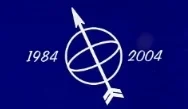Dec92
archive > Log > Log1992
Hong Kong

Marpol waste disposal

A PRESENTATION on protecting the marine environment was given by Patrick Lei, a principal environmental protection officer with the Hong Kong Government's Environmental Protection Department. He explained how Hong Kong was preparing to meet its obligations under the Marpol Convention by providing facilities for the reception of oil and chemical wastes from ships using the port of Hong Kong.
At present, Hong Kong has no dedicated facility to handle Marpol wastes. Currently waste oil contaminated with water is collected from ships by barges for simple oil-water separation to extract the oily fraction for reuse mainly as fuel in factories. This practice is environmentally unacceptable because the oily fraction recovered from this crude process may contain toxic metals which will be released as toxic emissions when the oil is burnt. Also, the water fraction is usually contaminated with oil due to inadequate treatment and hence causes pollution when it is discharged into the sea.
The situation has been recognised as unsatisfactory in Hong Kong for a number of years.
Following a feasibility study and site selection, Hong Kong's answer to this problem has been to construct a chemical waste treatment centre on the island of Tsing Yi which is situated in the north western portion of Hong Kong's port, close to the container terminals and the ship repair facilities.
The centre has good road access and a jetty which can accommodate vessels up to 6,000 tonnes. The collected waste is held in storage tanks prior to treatment. The tanks have a capacity to hold 5,000 tonnes of Annex 1 and 500 tonnes of Annex 2 waste.
The centre is being designed, built and operated under a 17-year contract which was awarded in late 1990 by the Hong Kong Government to Envirospace. The contractor is required to provide a barge to collect Marpol wastes from ships in the port. A land collection service comprising a number of road tankers will also be provided. The main equipment has already been installed and the centre is expected to start operating in early 1993. The centre is unique to the region in that it utilises the oily waste material as incineration fuel in the treatment of the chemical wastes.
Annex 1 waste will be treated to separate the oily fraction for burning as fuel in the centre's high temperature incinerator. The effluent will be discharged into the sea. If the effluent does not meet discharge standards it will be further treated and the resultant clean water will be used in the plant.
Annex 2 waste will be treated according to its chemical nature. Organic chemicals will be destroyed by high-temperature incineration, while acids and alkalis will be neutralised in a special treatment area before further treatment to produce clean water. Treatment residue will be chemically stabilised before disposal as land fill.
Environmental control features have been built into the design to ensure proper storage and disposal of Marpol wastes. The treatment centre operations incorporate safety precautions to minimise spillages during transfer of the waste from the barge. In the event of a spill, an emergency response procedure plan will be activated. Resources on hand to support the plan include a dedicated vessel capable of deploying a containment boom and clean-up equipment.
The collection of Marpol wastes is subject to licensing control under Hong Kong's Waste Disposal Ordinance. This will ensure that the contractor operates the collection service in accordance with the environmental control measures in the licence. Operation of the centre will have to comply with the specifications as laid down in the contract. This includes aspects relating to the reception facilities, treatment processes, environmental standards and monitoring requirements. Requirements under the Air Pollution Control Ordinance impose requirements which will also have to be complied with.
Contributed by John Lambourn, MNI
Seaways December 1992

